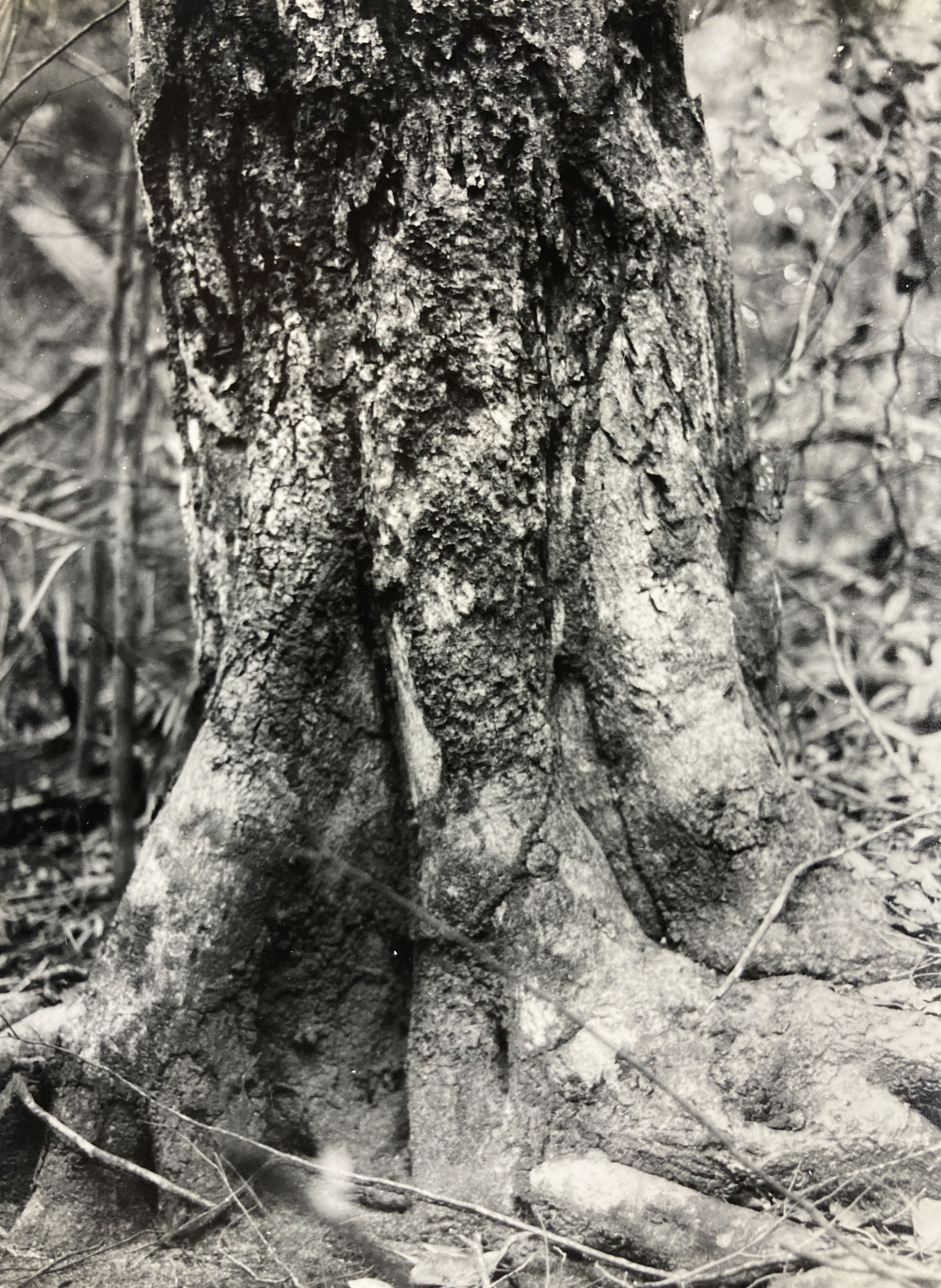Drypetes glauca Vahl
Euphorbiaceae ASOLILLO, SARDINILLO
Tree: Occasional evergreen canopy tree (25-30 m) found in greatest abundance along the narrow strip of vegetation immediately behind the Espadilla Sur beach in Manuel Antonio National Park. Possibly a new species, this tree has not yet been positively identified. A tree with a conspicuous and irregular trunk, Asolillo has long, willow-like branches that dangle and sway in the beachside breeze.
Description: Asolillo presents a very irregular, bending, twisted and often inclined trunk. Never cylindrical, its surface is molded by undulating folds that extend along its entire length to the crown. Nevertheless, Asolillo grows to be a large tree, with trunk diameters of 1 full meter or more. The thick, pale tan bark that covers its surface is roughly textured by vertical fissures and exfoliating plates with jagged edges. Buttresses are largely absent. The main bole frequently divides into secondary trunks at a relatively low level. Upon reaching the canopy, these further subdivide into many thin, long, flexible and drooping branches. The crown thus produced is thick, flowing, and willow-like. Leaves (9 cm by 2.5 cm) are smooth, simple and alternately arranged, occurring in two tiers along the twigs. each blade is narrowly elliptical in shape, tapering to a pointed drip tip and supported by an 8 mm petiole. Often the blade shows a marked asymmetry and curvature, with the mid-rib skewed to one side of the leaf’s central axis. New foliage and twig growth is seen in the crowns from December through February.
Flowers are minute (2 mm in diameter), green and inconspicuous. They are produced in very dense, axillary racemes that take the form of spherical heads of blossoms closely huddled around the twigs. Each petal-less flower, supported by a thin stalk (5 mm), is composed of five tiny green sepals, an equal number of minute yellow stamens, and a central pistil. Flowering periods are poorly synchronized and their timing lacks annual constancy, however flowers occur with greatest frequency from November through January. When fertile, only a few of a tree’s many branches produce blossoms. Sporadic flowers have also been observed in August and October. Fruits (1.5 cm) are round, pale-green to creme-colored berries with a layer of pasty flesh surrounding a single, green seed. Maturation and fruit fall occur in March and April. The seeds are unprotected by a seed coat and germinate immediately with the earliest rains of the new rainy season, in late April or May.

Similar Species: In its beachside habitat, Asolillo is unmistakable thanks to its large, irregular, roughly textured trunk and thin, drooping branches.
Natural History: Asolillo flowers are insect pollinated. Its fruits are probably dispersed by mammals. The narrow nature of this tree’s foliage is responsible for the common name “Sardinillo”. Along with other species found in its habitat, Asolillo demonstrates a high degree of salt and drought tolerance.
Distribution: Asolillo prefers Manuel Antonio’s coastal environment and it is found in the sandy soil behind the Espadilla Sur Beach as well as along the borders of the nearby mangrove. Other individuals have been located on steep slopes in the forest interior. In Costa Rica, Asolillo is also known from the Cabo Blanco area and Punta Leona. Additional collections of this species have been made in the Dominican Republic and Puerto Rico.


